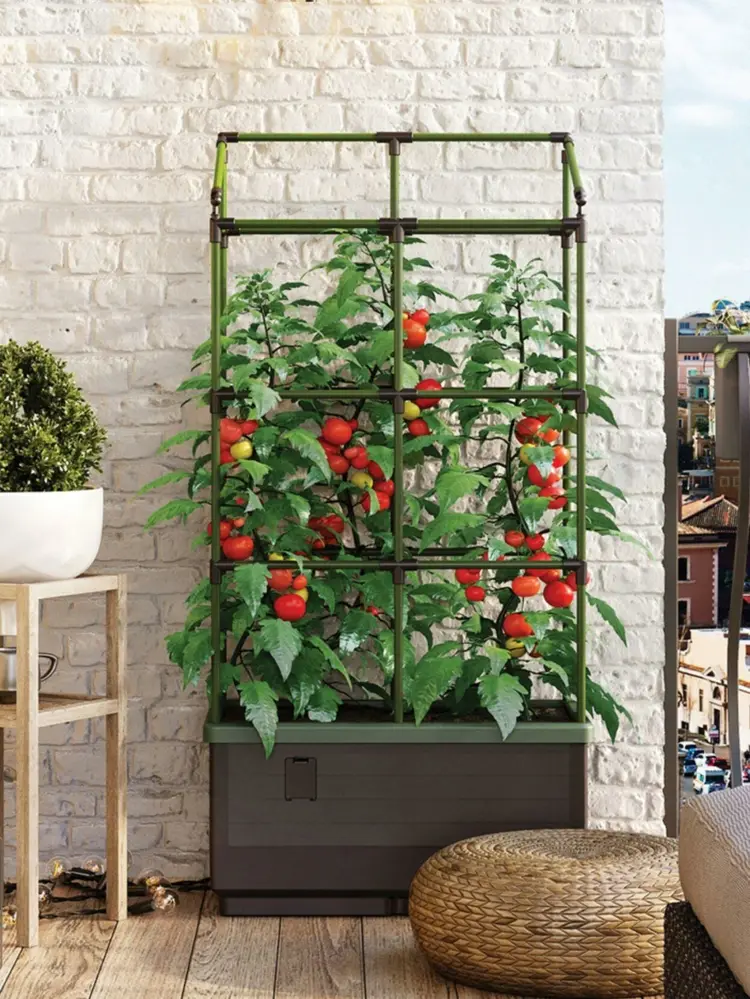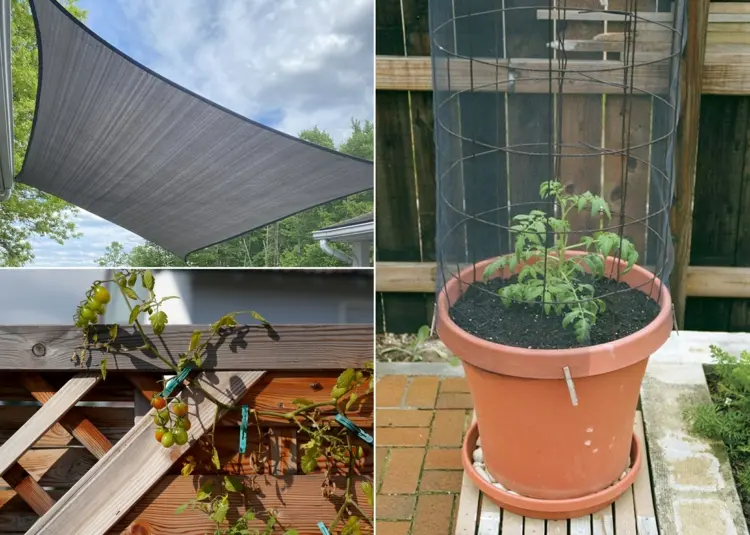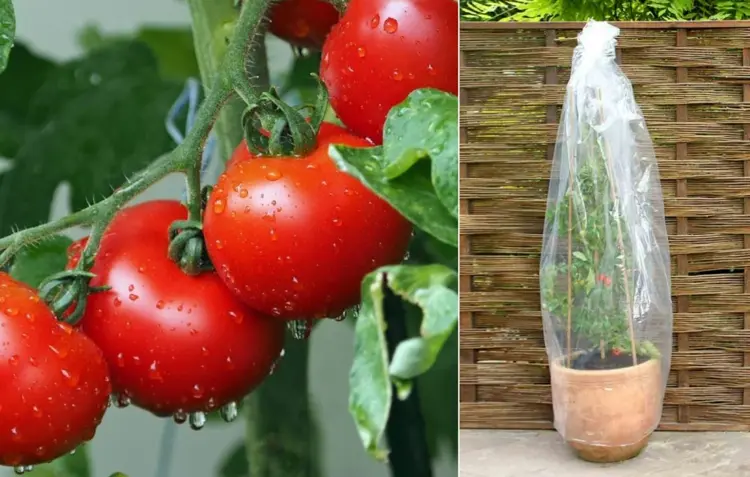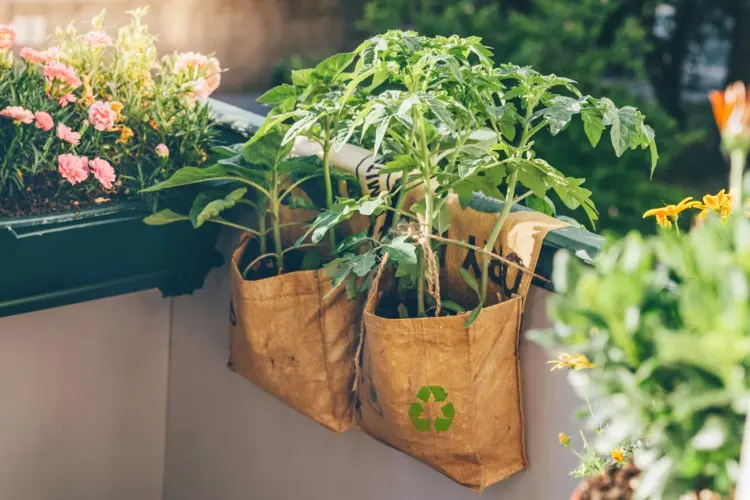Not everyone has a spacious garden. If you don’t have one or are limited in size, you have to get creative to grow vegetables. Fortunately, there are varieties that also thrive in a planter without any problems, so that you can use the little space outdoors for the others. But even if you live in an apartment in the city, you don’t have to go without what you’ve harvested yourself. For example, you can easily grow tomatoes on the balcony. But for them to thrive, you need the right support, as well as rain and sun protection. We summarize everything important about these points.
Growing tomatoes on the balcony – protective measures for the plants
After we have already explained the most important things about the location, pot size and care of the tomato plants in another article, we are now dedicating ourselves to the protection of the plants:
- Climbing aid with a supporting function: Since they grow quite high, they have to be made more stable with a support (especially on the balcony, the wind can blow quite strongly). Which ones are best for tubs and stable enough when growing tomatoes on the balcony?
- sun protection: These are sun-loving plants, but in midsummer it can quickly become too much of a good thing. Therefore, they need a little protection from the summer sun.
- rain protection: What tomato plants don’t like at all is rain. A certain amount of rain protection, which is often already provided by the sun protection, can help.
Support the balcony tomatoes

The only tomato variety that could do without a support is the bush tomato, as it grows more in width than in height. Supporting tomatoes in the pot not only prevents the plant from buckling when it gets heavier (at the latest when the tomatoes are growing). Potted tomato plants are also endangered in stronger winds and must therefore be protected. What do you use to support tomatoes?
In principle, this depends on the pot size that you have chosen. In most cases, however, the balcony plants can also be given the same models as the outdoor plants: sticks made of bamboo (or other wood), plastic or metal (15, 20 or 30 cm thick depending on the material). There are straight models, but also spirals and ladders. There are also trellises with attached planters. A trellis tower holds plants up to 2 meters high and obelisks for flowers also work well. Just browse the hardware store.

If this type of climbing aid for tomatoes on the balcony is not for you, you can simply stretch string or ropes or wire. If necessary, screw eyelets into the house wall and/or ceiling. You can also use the railings to tie down. Here is an example: the tomato pots are lined up. A rope runs horizontally along them at a height of 2 meters. From this rope you now let ropes hang down vertically on each plant and tie them to the stem below the first row of leaves. The balcony tomatoes can now grow up on these hanging ropes. Guide them in this by tying them up at intervals.
Growing tomatoes on the balcony, protecting them from the sun

Should tomatoes be in the sun or in the shade? The fact that the plants need sun protection raises doubts. The fact is, however, that tomatoes absolutely need sun in order to be able to develop juicy, bright red fruits. However, the strong midday sun in summer can affect the plant and even young plants that have just been placed outside can burn quickly (if they have not been hardened through acclimatization). What can you do when growing tomatoes on the balcony?
- Shade plants during hot weather, which is quite a hassle, especially if they aren’t on wheeled trivets.
- Put up an awning or parasol if there is enough space on the balcony.
- Thin, fine-meshed nets are also well suited for larger plants that are used to the sun. They can be left up all summer as they let in just the right amount of sunlight, but also allow the wind to blow through (so that stronger gusts don’t rip away your sun protection). To be on the safe side, you can also remove the net during the less hot hours of the day to give the ripening fruit more sun.
Rain protection for tomatoes on the balcony

No matter which tomatoes you have chosen for the balcony, they all need protection from the rain. Since most balconies have a roof, this is usually sufficient protection as long as the tomatoes are on the wall of the house, for example. Otherwise you can also use the following:
- Insert bamboo sticks into the pots (you can also use the supports) and attach plain foil. You can tie the other corners of the film to the wall of the house using hooks. With it you can protect several plants at once, which is useful if you grow a large number of tomatoes on the balcony.
- If you are growing a manageable number of tomatoes on the balcony, tomato hoods are also a good way to protect them from moisture. It is intended for individual specimens and is placed over the plant to create the effect of a greenhouse. However, as soon as the sun appears, the hoods must be removed, as they heat up quickly.
- A good alternative to the hood is the tomato hat, which also has holes. This allows air to circulate during use.

Would you also like to grow cucumbers on the balcony? Have a look at this article!